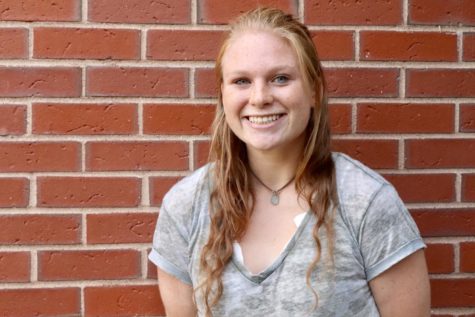College process: then vs. now
Credit: Joyce Wu
Pictured above is a pile of college mail. The climate surrounding college admissions has changed substantially over the past thirty years. “There are a lot of similarities to what [students] do now, it’s just that every piece of it is less intensive,” Rideout said.
April 8, 2019
From repeated standardized test-taking to writing supplement essays, the college process is long and complicated for most students and can start as early as their sophomore year. Currently, college acceptance rates are at an all-time low and decreasing every year. This rapid change raises the question: how did the college process 20+ years ago compare to how it is now?
Science department head Kenneth Rideout graduated from Purdue University in 1992 with a B.S. in Physics with honors. Rideout did not decide his major until after he applied and was ready to attend college.
“I thought [that I] might as well study physics, and then I can always study one of the specific engineering disciplines later on if I wanted to do that,” Rideout said. “I actually entered as a double major in physics and computer science.”
Rideout applied to six or seven schools, all of which he was accepted to.
“[Applying to college] was just so much more relaxed,” Rideout said. “It was just much less of a rat race. If you were a smart kid and you had high test scores, then you probably were going to get in everywhere you applied to.”
Senior Jake Horowitz applied to 13 schools to ensure that he applies to schools he could most likely get into, as well as schools that may be more competitive.
“[The process is] fairly stressful, and there’s a lot of competitiveness especially because I have a twin, so there’s always a lot of comparing and wanting to get better results,” Horowitz said.
Language department head Melissa Bryant got her bachelor’s degree from the University of Massachusetts Amherst and her master’s degree at the University of Connecticut. Coming out of high school, Bryant only applied to three schools, whereas, according to Bryant, students today on average will apply to three times that amount.
“People apply to so many more [schools now],” Bryant said. “I just feel like the stakes are so much higher, and people are so nervous about losing out if they don’t go to the perfect college. I don’t really feel like my friends and I were really like that.”
Extracurriculars are starting to play a much larger role for current students involved in the application. Most colleges view application holistically, which not only puts weight on a student’s academics but also the things they accomplish outside of school and standardized testing.
“[Colleges are] starting to care less and less about SATs, and it’s really becoming more about your extracurriculars,” Horowitz said.
Rideout acknowledges that back when he was applying to college, the idea of catering activities to help appeal to colleges was not a priority.
“Nowadays, it’s not enough to have high test scores and straight A’s and take all hard classes because they’re getting thousands of applications like that,” Rideout said. “The idea that you need more than just being a good student was foreign to me. So, the concept of having a ‘resume’ or ‘resume building’ or really thinking about what kind of activities you did wasn’t on my radar, and I don’t think it was on any of my friends’ radar.”
The format of applications has also changed. Most schools have transferred over to using The Common Application, which enables much of the process to occur online. Students write a common essay to send to all of their schools, and each school would additionally have their own essays they asked students to write. However, just over 20 years ago, the entire process was by hand, and although there was a common essay that students would send to multiple colleges, a real common application did not exist.
“Your guidance counselors would send your transcripts, but they did not have any kind of relationship with you,” Rideout said. “It was all paper. I remember writing my college essays on a typewriter, and if you miscounted your words, you would have to start all over again.”
For schools using the Common Application, it is similar to a big umbrella of all college applications in one place, making it easy and reliable for students.
“[Common App is] how I keep track of when my college apps are due, what I have to get in, which essays I have to get in and financial aid is a part of that as well,” Horowitz said.
When applying to college now, extra help and resources are available to students who can afford it and to those whose parents want their children to receive an extra boost. The test-prep industry is evolving at a faster pace than ever before due to the increase in students applying to college. Help like test-prep books, SAT courses/tutors and college counselors are a common commodity that is used by many WHS students. In past generations, outside resources weren’t as frequently used.
“[External help] certainly wasn’t as common where I grew up,” Rideout said. “I mean, I was surprised when I found out that kids in my town took the SAT more than once. Like a friend of my goes ‘Oh, you know, I heard you should probably buy one of those prep books and look at it before you take it’ and I was like ‘Really?’ [The] industry of test-prep and people counseling you on how to get in definitely increases the competitiveness for everyone. That stuff probably did exist back then, but I didn’t know about it. It was just emerging in the 80s.”
Similarly to Rideout, Bryant went into college without a concrete idea of what she wanted to study. She was interested in art, but claims she “didn’t have the courage to be an art major.” So as an alternative, she started out in business, on the path to open up her own art shop. But after a year of boredom in business classes, she decided to change directions.
“I paused and took everything I had ever wanted to take,” Bryant said. “I took art history, philosophy, sociology, Spanish, and I ended up going on a trip to Ecuador for a year on an exchange. And that was my path. I came back after a year and stuck with Spanish.”
In addition to UMass, Bryant applied to Penn State University and Williams College.
“I look back and think, ‘I wonder what my life would’ve been like if I went to Williams instead?'” Bryant said. “But I went with my friend [to UMass], [and] I think you create a path [wherever you end up] and that’s awesome.”
Many teachers at WHS studied in college at a time where the American workforce was going through changes regarding the career paths that people took.
“My generation was the generation who saw blue-collar jobs disappear,” Rideout said. “If you didn’t have a college education and you’re my age, then you don’t have job security, probably lost your pension plan and your wages didn’t keep up with inflation.”
With the influence of this change in culture, it started to become more common to see kids going to university, in order to pursue a dream of a “better life.” Post-high school education is highly valued in America now because of the supposed opportunity it brings in the job market.
“Right after I graduated from college, the message kind of became that the only path to the ‘American dream’ is through college, which definitely was not the message growing up in high school,” Rideout said. “The conversation growing up in high school was more like, ‘Well, you’re a pretty good student, you should probably consider applying to college.’”
With more cost-efficient options rising, such as community colleges and online university courses, now more than ever, students have financial difficulties are able to attain a college degree. Now, in the 21st century, college attendance rates are higher than they have ever been, possibly because of this increased number of students applying to colleges, as well as many students applying to between 10-20 colleges at a time. One thing is for sure: college degrees are more accessible now than ever.
“Nowadays, the conversation is like, ‘Should you go to community college or attend a four-year university?’ There’s no question about not going to college,” Rideout said. “That ups the ante for everyone so now we see more applications and more people trying to get through, and there aren’t that many more universities or colleges.”
The current culture of stress really boils down to is how hard students are pressured by themselves, their peers, at home, as well as the thought of their post-graduate lives.
“I feel like parents think if their kids don’t go to a really good school that you’re not going to have a piece of the pie and that your life’s not going to be good and that it really determines your success on how you’re going to be,” Bryant said. “I don’t think your generation is worse or more stressed, but I do think there’s this subtle thing about, ‘you’re going to be a have-not if you don’t go to the best school,’ and I just don’t think that’s true.”
The Wayland High Guidance Department declined to comment for this article.











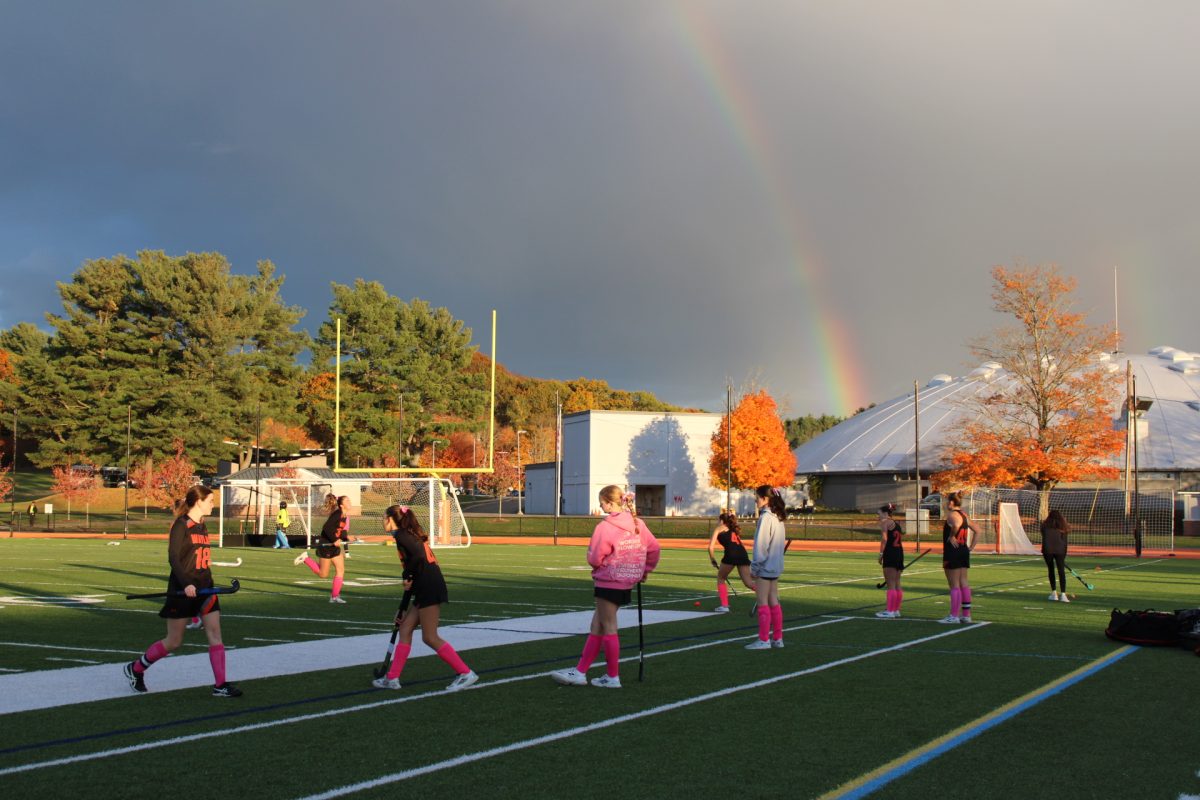
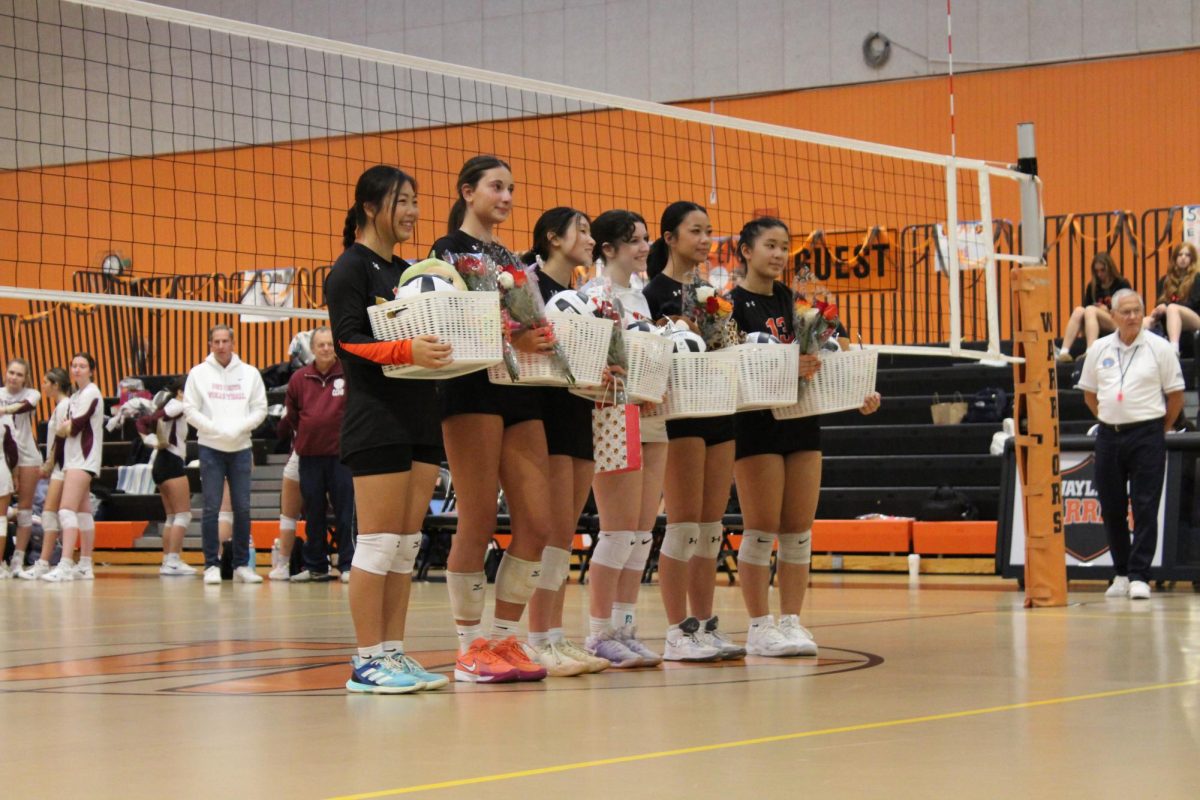
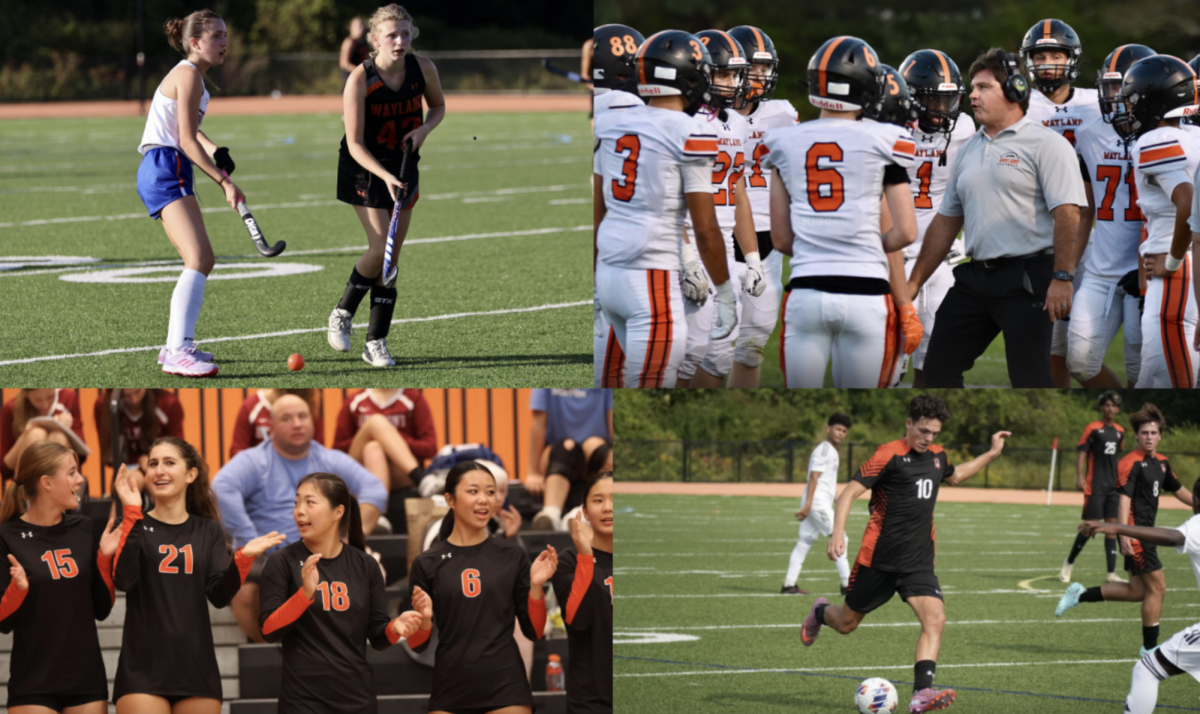
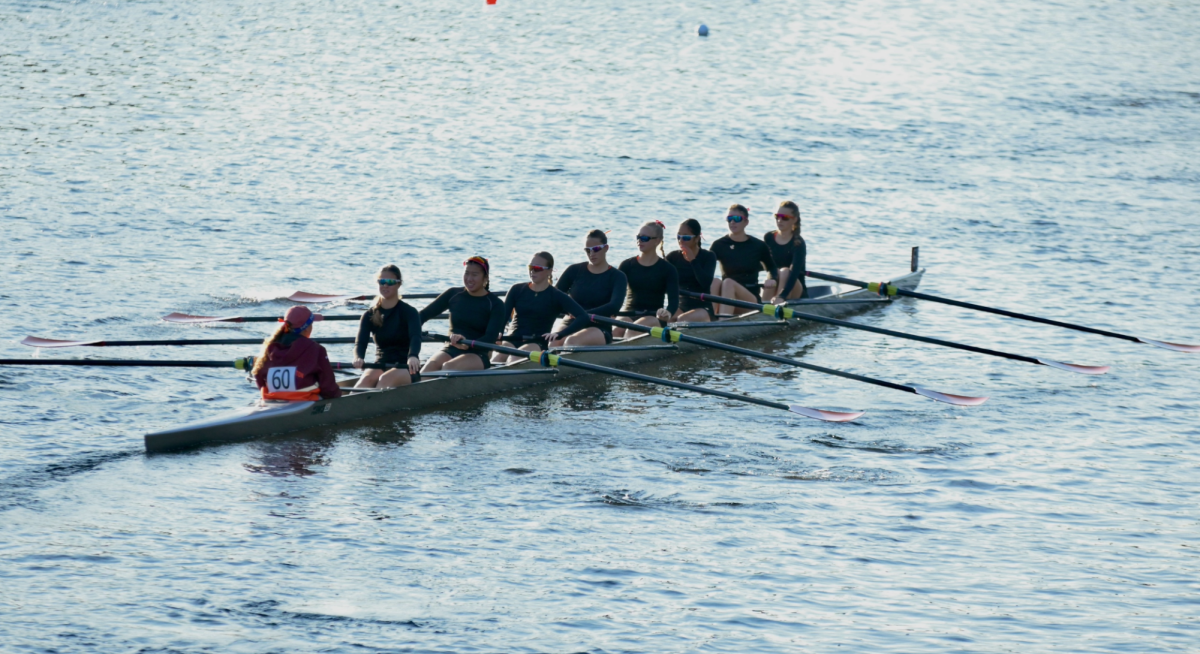
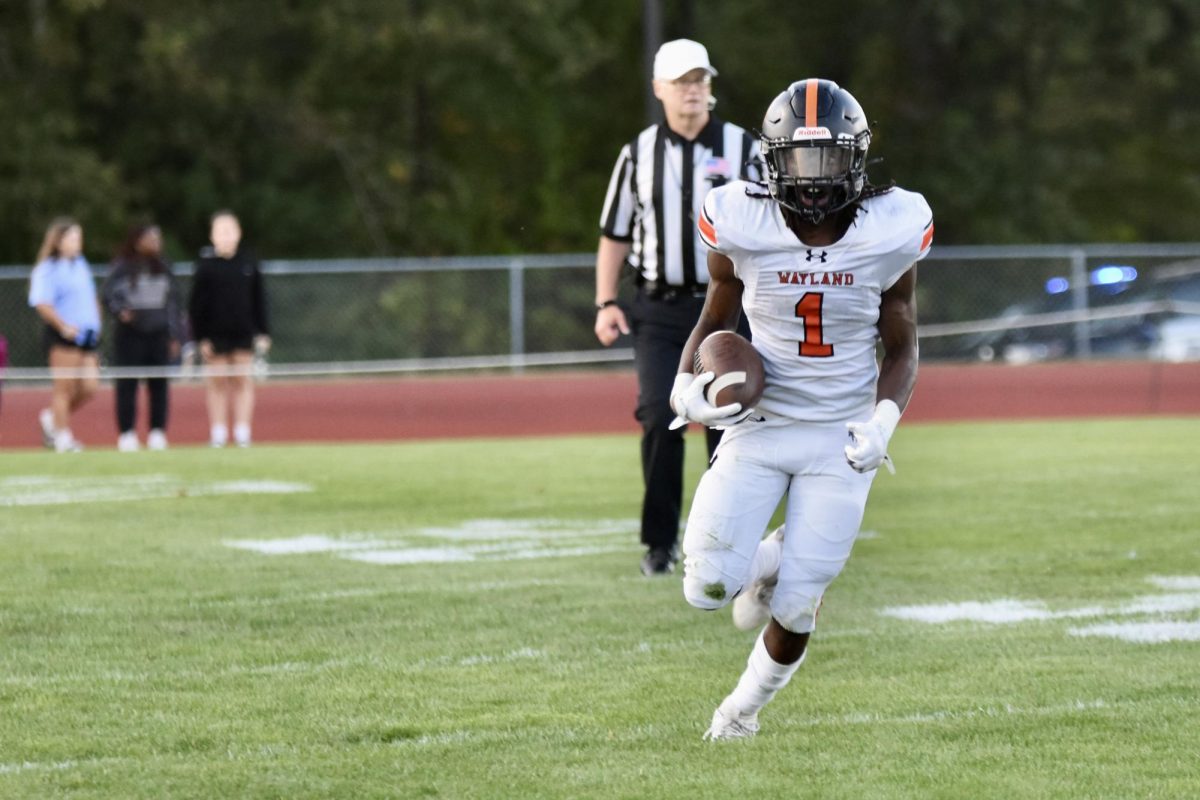











![Pictured above is a pile of college mail. The climate surrounding college admissions has changed substantially over the past thirty years. "There are a lot of similarities to what [students] do now, it’s just that every piece of it is less intensive," Rideout said.](https://waylandstudentpress.com/wp-content/uploads/2019/03/IMG_4759-900x675.jpg)
